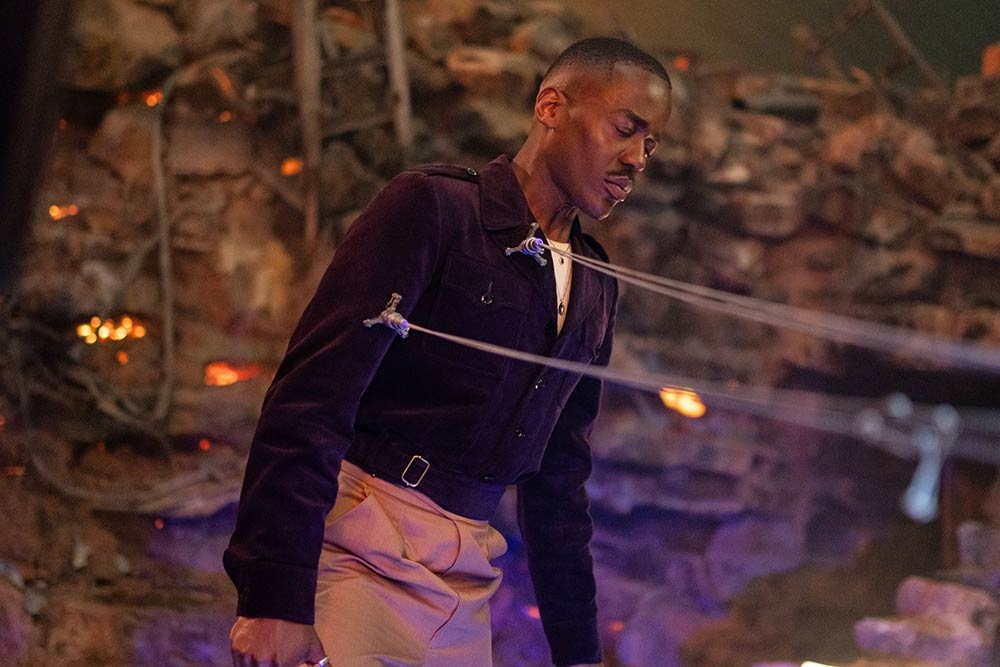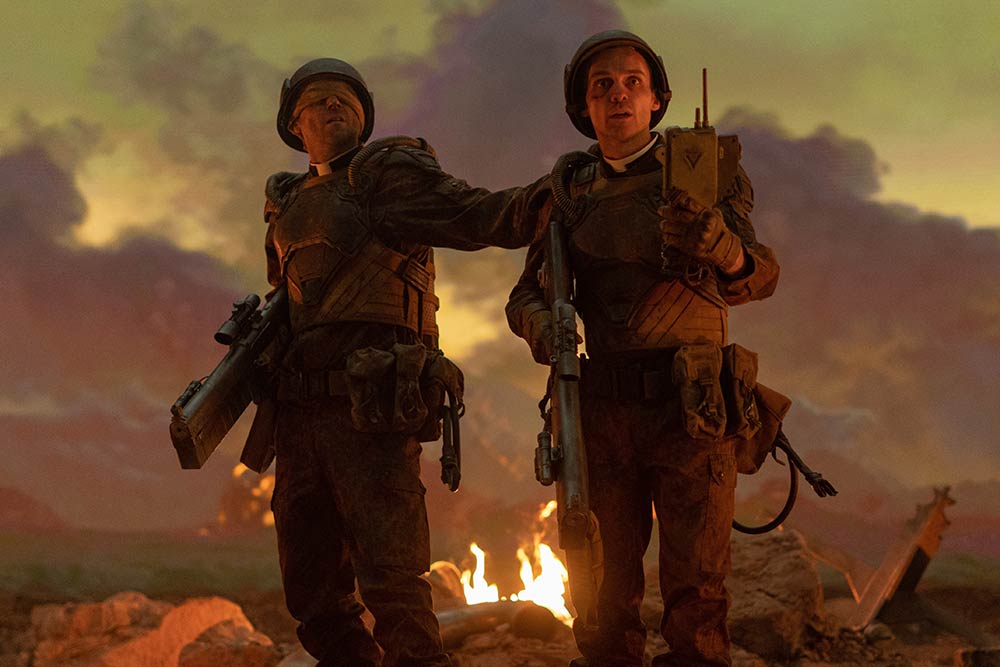2nd Opinion, Take 1 “Boom” – A Thrilling Doctor Who Ride

Gustaff Behr reviews the third episode of Series 14.
It feels like 6 years, 4 months, and 25 days since Steven Moffat last wrote a script for Doctor Who, but I’m delighted he’s returned to share his imagination with us. “Boom” was a thrilling ride, and I can only hope Mr. Moffat writes more episodes in the future. What’s that? He’s also writing the Christmas Special? Even better! But, let’s slow down to take a look at the very first time Doctor Who dedicated an entire episode around the ridiculous (yet entirely plausible) scenario of our favorite Time Lord standing on a landmine and needing to save the day without taking a step…
Even though “Boom” featured both characters prominently, this episode was more of a Doctor-focused episode. Although Ruby’s involvement lessened as the episode progressed, she was allowed to do so much early on. The scene where she passes the flesh container to the Doctor, fighting with him for his life, was amazing. It showcased her bravery and willingness to face death head-on, reinforcing her importance as a companion. Even later in the episode, when Mundy pulls a weapon on them, Ruby slides in-between her and Splicer to protect the kid.

But really, Ncuti is the star here. Steven Moffat not only gives him some amazing ‘Doctory’ dialogue, but delivers a script that allows Ncuti to flex his acting muscles…like portraying the Doctor’s vulnerability. Watching the normally calm and in-control Time Lord ramping with adrenaline and struggling to maintain his composure, was wonderful. It showcased just how powerless Fifteen was in this scenario, adding character to Ncuti’s incarnation. This should go far in endearing him to fans who may not yet be onboard with his portrayal. The use of music, particularly the Doctor singing to calm himself, worked exceptionally well. Much like in “The Church on Ruby Road”, the singing served a narrative purpose, illustrating that this Doctor uses song to steady his nerves. Hearing him sing, with the song sounding almost like a prayer before a known death, added a poignant layer to the moment and deepened our understanding of Fifteen’s coping mechanisms.
The script for “Boom” is also stacked with crazy ideas.
The Villengard algorithm, a system designed to perpetuate the demand for war by killing Anglicans is set against the backdrop of Kastarion 3, a desolate planet devoid of any tangible threat. Moffat highlights the absurdity with ambulances that murder soldiers instead of healing them, including those with injuries as minor as temporary blindness. These monster machines wear the face of what looks like a frail old woman and mulch their victims into fleshy bottles, which I’ll just say is very dehumanizing, despite what AI John says.
The concept of having the main character remain stationary for an entire episode and setting 99% of the story on a single set may scream ‘cheap bottle episode,’ but it’s often under budgetary constraints that true art emerges. However, this episode is far from cheap-looking. The visuals are stunning, and if you watch Doctor Who Unleashed as I did, you’ll be amazed by how much effort and expense went into making “Boom” look so impressive.

And it’s not just the visuals; it’s the actual script. Steven Moffat logic-proofs his story with some rather convenient exposition to explain why certain actions aren’t possible. The Doctor may or may not have his sonic screwdriver, but the landmine is so intensely fragile that he can’t risk reaching for it without potentially blowing up half the planet. Yes, half the planet. This is a very specific landmine, and the Doctor should probably be thankful for its temporal explodiness. If it were an ordinary space-mine, Mundy would have probably just executed him in the name of whatever god she and her band of zealot schmucks worship.
“Boom” also fires a barrage of social critique, ranging from the subtle to the heavy-handed; scrutinizing the manufacturing and distribution of sophisticated lethal weaponry with the same casual attitude as any everyday consumer product, while also taking aim at organized religion. Similar to the abstraction of deities, the Anglicans confront an unseen enemy, which is just so wonderfully ironic. Moffat also takes a swipe at celebrities and politicians with the recurring phrase “Thoughts & Prayers”. It sounds so much like the typical superficial offering of condolences after a tragedy, but devoid of any substantive action that could help prevent more in the future.
“President of something”? More like future serial killer. Splicer is weirdly stiff throughout the episode, completely oblivious to what death looks like for her people. Even after witnessing someone die right in front of her, she barely reacts or connects the dots that ‘see-through daddy’ is actually dead. I can easily picture a future Splicer standing over one of her victims and going ‘they’re not dead, they’re just gone’. Whether it’s due to poor direction or the actress’s inexperience, she was definitely the weakest part of the story.

Varada Sethu’s portrayal of Mundy trails closely behind, though I’ll admit, it’s a compliment, not a criticism. I really, really hated Mundy as a character; torturing the Doctor over what amounts to a glorified flesh urn. Prioritizing ‘ashes’ over a life… well, let’s just say I couldn’t stop laughing when her romantic interest died. When an actor can elicit such visceral reactions from an audience, it speaks volumes about their skill. I sincerely hope Varada comes back as another character for Series 15 because Mundy herself can go take a long walk off a short pier.
Given the title and the preview, next week’s episode looks like it’ll be about things that follow you around, maybe at a safe distance of 73 yards (lol). Whatever it ends up being, I just want it continue the momentum set by “Boom”. Please Steven, feel free to pop in whenever, wherever.








